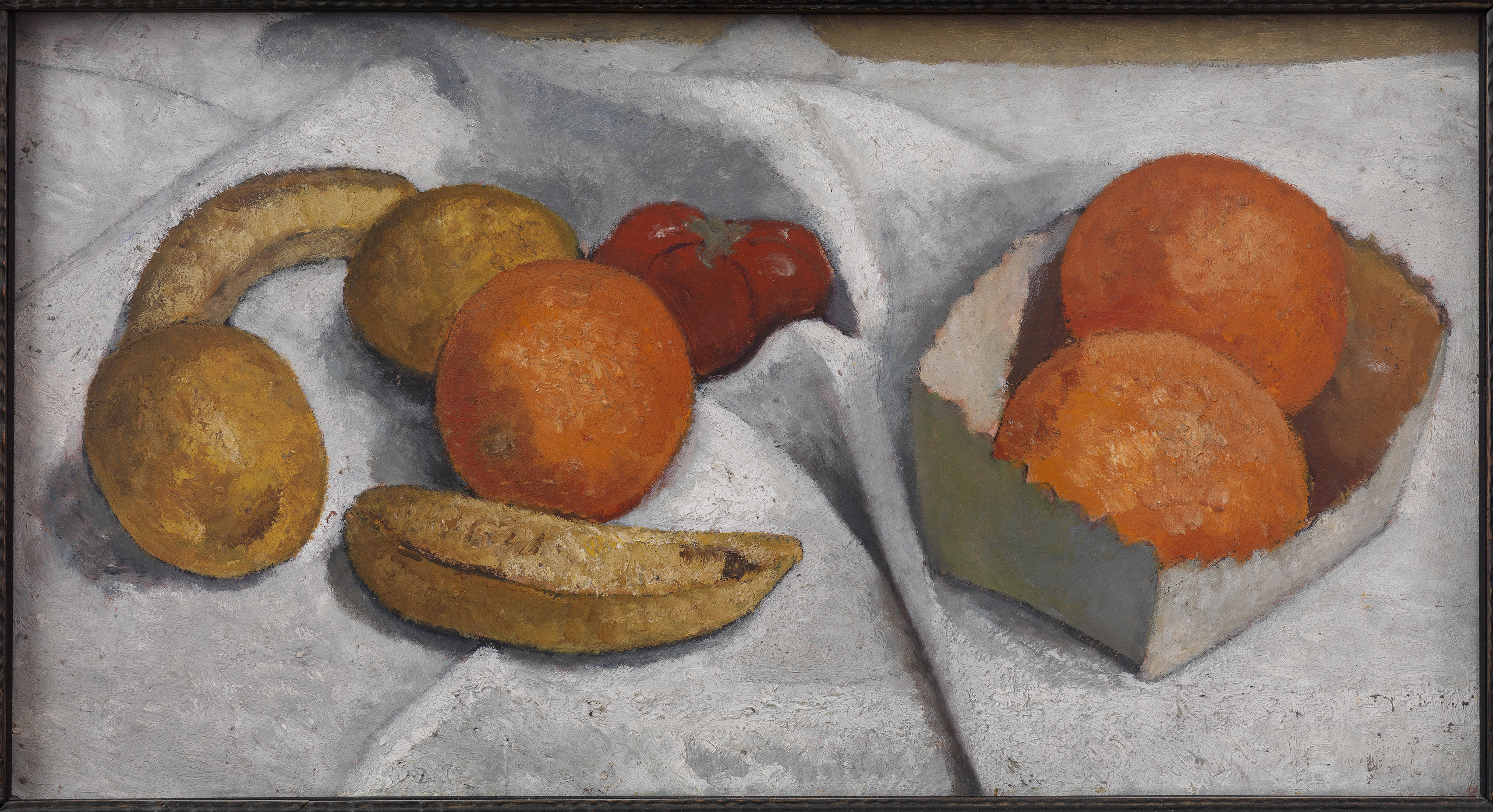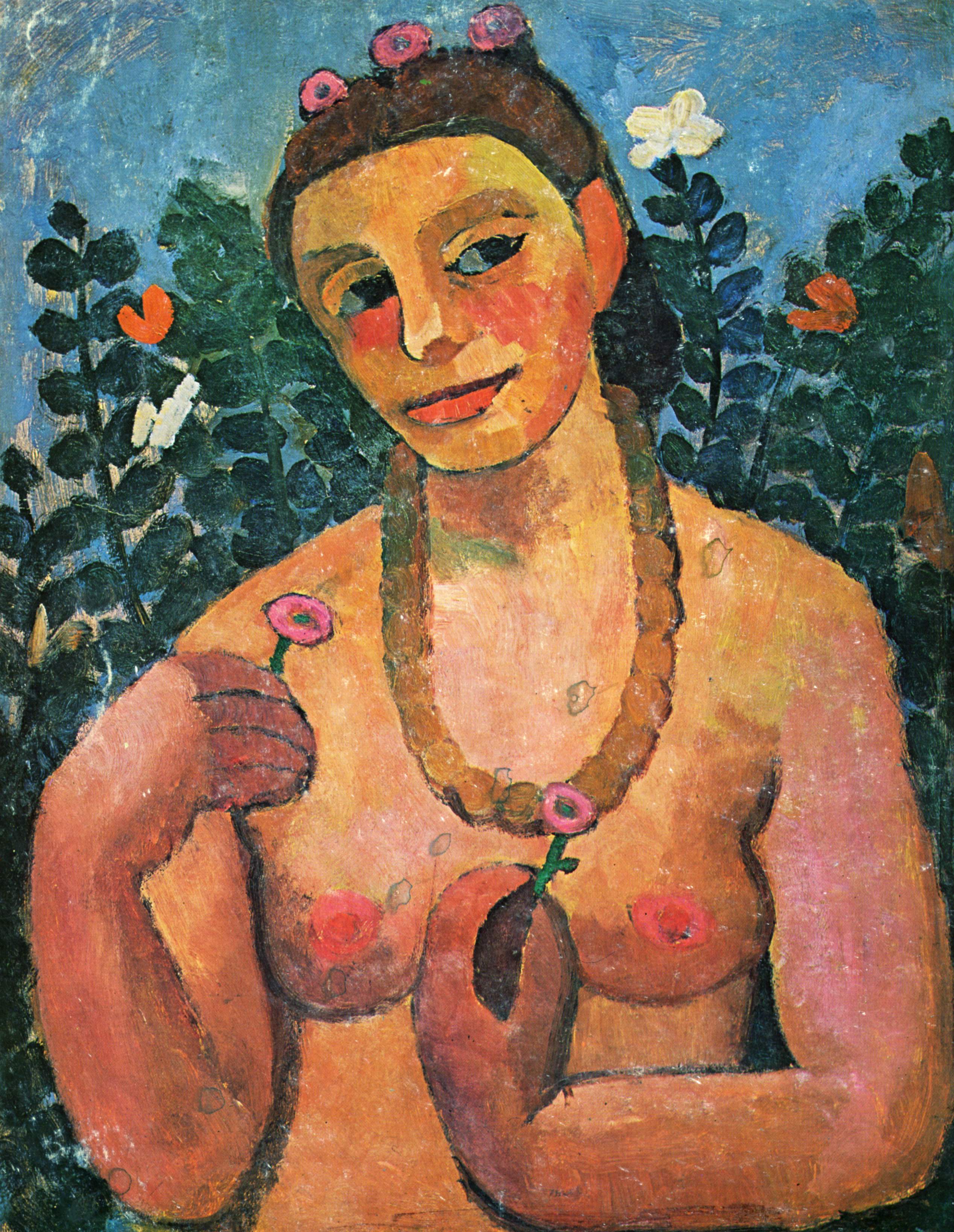The German painter Paula Modersohn-Becker ranks among the most important representatives of early Expressionism. Born in 1876 in Dresden, she moved to Worpswede in 1898 after years of taking drawing and art classes and her teacher’s exam. Here she took lessons with Fritz Mackensen until 1899 and became friends with Clara Westhoff, the later wife of Rainer Maria Rilke. In 1900, she travelled to Paris for the first time studying in the nude class of the private academy Colarossi. She frequently visited the Louvre. In June she returned to Worpswede, where she became engaged to Otto Modersohn, whom she married the following year. In 1903, after a stay in Berlin she continued her studies at the Colarossi academy in Paris. In 1905 and 1906/1907 she stayed in Paris again, where amongst others she attended anatomy and nude courses at the École des Beaux-Arts. Paula Modersohn-Becker died of an embolism on 20 November 1907 in Worpswede after the birth of her daughter Mathilde.
The Still Life with Oranges, Bananas, Lemons and Tomatoes that we present today thanks to Kunsthalle Karlsruhe was painted in Paris between May and June 1906. A passage in a letter to Martha Vogeler dated 21 May 1906 may refer to the genesis of this group of works: “[...] I’m painting life-size nudes and still lifes with confidence in God and myself [...].” The luminous colorfulness, the soft and fine application of paint and the top view perspective with the tablecloth as a background filling the entire picture owe much to Parisian examples such as van Gogh, Cézanne, and Émile Bernard, while the resolute simplicity of the arrangement and the tactile presence of the objects—their bulging volume as well as the spatiality suggested by shadows—reveal the painter’s own unmistakable way of seeing things as she broke away from conventions. The following year she would write: “[...] I wanted to defeat Impressionism by seeking to forget it. In doing so, I was defeated. We have to work with Impressionism, once having come to terms with it, digested it.”
We share today's painting and story thanks to the Staatliche Kunsthalle Karlsruhe. :)
To learn more about other Women Artists please check our DailyArt Notebooks and calendars for 2022 here. :)
P.S. Here you can read about four prominent female Expressionists in art history!


 Paula Modersohn-Becker
Paula Modersohn-Becker